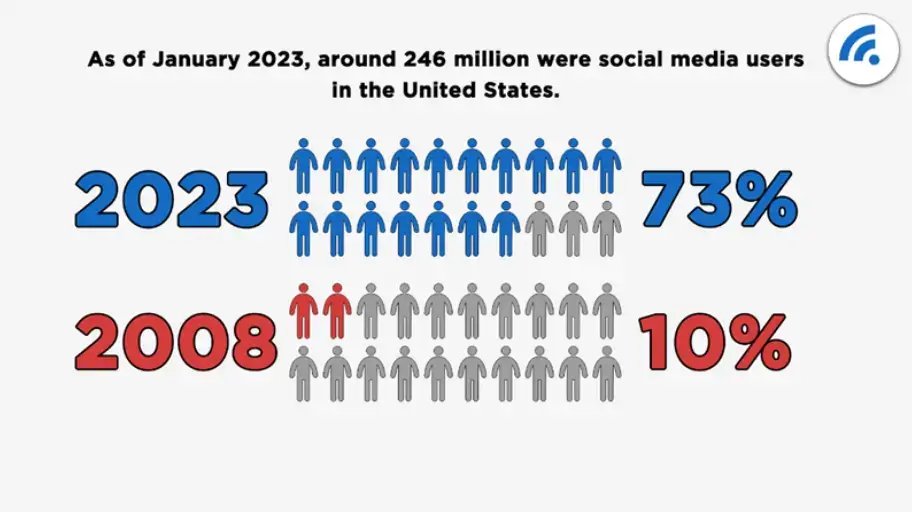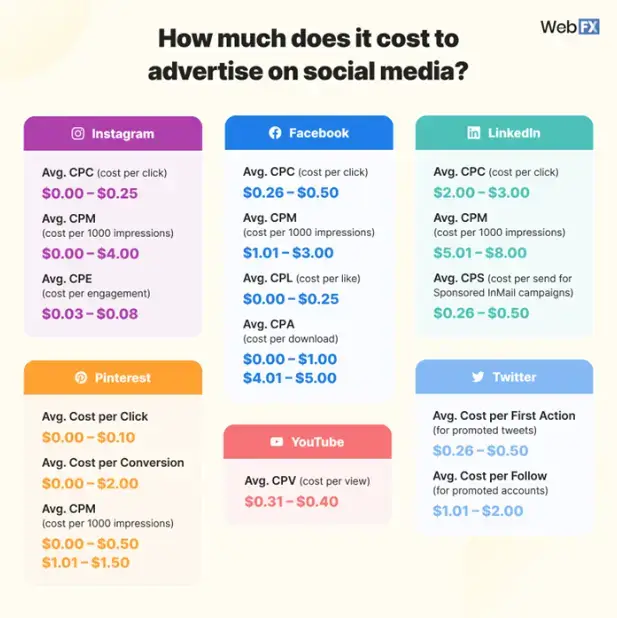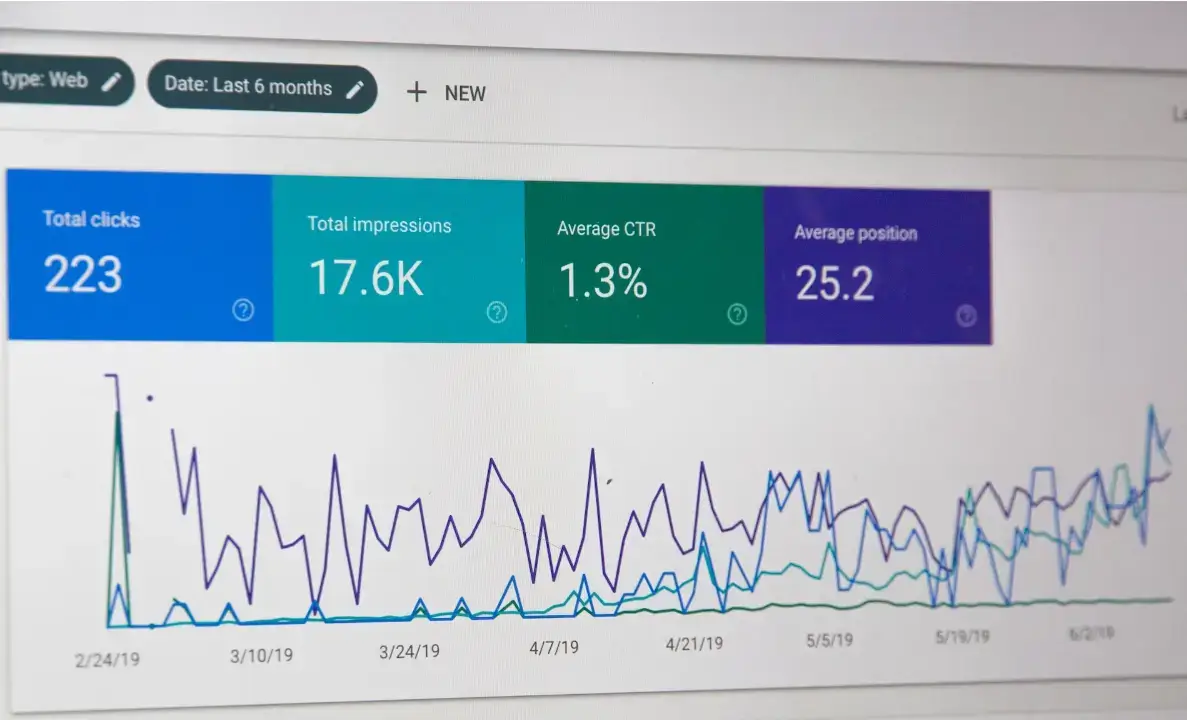Social media—despite being a relatively young phenomenon—defines how customers view, interact with, and think of brands.
Today, it’s never been more important for business leaders to understand what makes a strong B2C social media strategy.
Brands that do social media marketing the right way can see their impressions, conversions, and sales skyrocket.
When you can reach the feeds of up to 4.9 billion social media users around the world, there’s really no limit to how quickly you can scale your operations and visibility.
Of course, your social media strategy must also be targeted.
You must understand who your audience is, what they want from your brand, and how you can convince them that you tick the right boxes.
This is no easy task. Your social media campaign must grab the viewer’s attention in a split second as they scroll, if it’s to stand out from the noise.
To help your B2C social media strategy get off the ground, we’ve put together this page as a guide on what to do at each step of the process.
We’ll talk about key considerations, tips, and tricks to help you make a lasting impression.
Let’s dive in!
In this article:
- How to Create a B2C Social Media Strategy: A Step-by-Step Guide
- Growing Trends in Social Media Marketing in 2024

How to Create a B2C Social Media Strategy: A Step-by-Step Guide
- Understand your target audience
- Set your goals
- Choose the right social media platform(s)
- Create your content strategy and calendar
- Focus on growing your community
- Strengthen your reach with paid ads
- Constantly monitor and improve your strategy
1. Understand your target audience
The first step with your social media strategy is to understand who your customers actually are.
You might find it useful to create a ‘customer persona’ for each audience segment. Then, when writing posts or shooting videos, you can imagine that you’re speaking to that person directly.
You can also use the data that you’ve already collected on your customer base to inform your strategy and create more engaging content.
If you are investing in influencer-generated content, ask your customers which influencers they would prefer to see on your page.
For instance, you could launch a user survey to gather feedback on your products, or deploy a call monitoring tool to understand your customers’ needs and preferences better.

2. Set your goals
Setting objectives should be a core part of a business’s decision-making process. Not only will they be a guiding light for your strategy, but they’ll also act as benchmarks for future reference.
When it comes to social media marketing, you should determine which performance indicators matter most to your business.
If boosting search engine optimization (SEO) is a top priority, track how your website traffic increases with social media campaigns.
If you’re all about lead generation, then check how many people are signing up via your landing page, etc. From here, set achievable targets and make monitoring your progress a habit.
3. Choose the right social media platform(s)
If you want to connect with your audience, you’ll first need to work out where they are. Luckily, this is much easier with social media than it is with traditional marketing.
Facebook is the main social platform for many people and businesses. It has mainstream appeal, but it’s not quite as “cool” among younger generations, who tend to prefer Instagram or YouTube.
As for professional audiences, LinkedIn is one of the most trusted sites. You can use free LinkedIn automation tools for better outreach, and if you’re marketing to Gen Z, TikTok is your best bet.
Start with the platform that best reflects your average customer demographic, and then scale your marketing campaign across multiple platforms.
To efficiently manage various accounts across these platforms, particularly when reaching diverse audiences, tools such as anti-detect browsers (e.g., Multilogin) can enhance your workflow while ensuring sessions remain securely isolated.

4. Create your content strategy and calendar
Now, it’s time to start drawing up what your posts will look like, i.e., will you go with long-form ‘thought leadership’ pieces, short-form info pieces, video content, prize draws, competitions, or even a podcast?
You’ll also need to create a content calendar to ensure you never miss a day of publishing new posts. Try to think about seasonal trends and how you can generate excitement around them.
As always, your content strategy must be targeted. There’s no point in sending out the same post to thousands of people if it’s only going to connect with a hundred of them.
Rather, you should make the most of social media segmentation options to choose who sees what.
These use algorithms—one of the mainstream applications of AI in User Experience—to show posts to people based on their demographics, activity log, and interests.
It means your campaigns are more likely to drive customer conversions and deliver growth.
5. Focus on growing your community
Your business social media pages should be active.
Remember, feedback is a good thing, and if people are criticizing your brand on social media, it’s a great chance to learn more about their expectations and needs.
Be active in replying to comments, resolve disputes transparently, and integrate the process with your virtual contact center (if you have one) to deliver a memorable customer service experience.
6. Strengthen your reach with paid ads
Paid social media ads are a great way to amplify your reach.
They show up in your customers’ feeds as ‘Ad’ or ‘Sponsored’, but if you make them engaging enough, people will hardly notice.
It means you’ll have many more eyes on your products and brand, which can snowball into a stronger online presence. For best results, use both regular and paid content.

7. Constantly monitor and improve your strategy
Finally, make sure to monitor your social media and ad performance regularly, checking whether you’re on course to meet your objectives.
A great way to hone your strategy is to use A/B testing. This means you post two similar pieces of content with one key difference, such as the color or font type.
You can then compare which one the audience prefers. Rinse and repeat this cycle to create the best content you can.
Growing Trends in Social Media Marketing in 2024
- Video content is the most engaging format
- Short-form content like TikTok has a bright future
- Affiliate marketing can help you reach niche audiences
- Social commerce goes hand in hand with this
- SEO is increasingly used by social algorithms
Video content is the most engaging format
Video is much easier to consume than other content formats. Your customers don’t have to invest their time in a lengthy read, since they can ‘switch off’ and enjoy the audiovisual experience.
How-to guides and instructional videos are especially popular, but you can also post teaser trailers of upcoming products and gauge community support.

Short-form content like TikTok has a bright future
A 2022 study found that 66% of consumers find short-form videos the most engaging content type—it holds their attention for two-and-a-half times longer than other content on average.
Platforms like TikTok are perfect for this, where the average video length is between 10 and 15 seconds.
This rise in mobile-first platforms has also led to a surge in vertical video content, which aligns with how users naturally interact with their devices.
It’s particularly heavy on user-generated content, which we’ll cover in the next section.
Affiliate marketing can help you reach niche audiences
User-generated content, like reviews or unboxing videos, is great for establishing trust with a social media audience.
Not only does this drive conversions, but it also finds niche audiences your regular content couldn’t.
To promote user-generated content, you can offer an affiliate program that pays your customers a commission when someone signs up via their link.
Try making a set of video tutorials and resources to get people on board and make engaging posts.
Then, if it goes well, you can even promote your top affiliates to be brand ambassadors with a closer connection to your company.
You could use a remote desktop for Mac or PC to share details on upcoming products and drum up some excitement with behind-the-scenes footage.

Social commerce goes hand in hand with this ☝️
As well as funneling visitors to your website, social media is also a great platform for making direct sales.
Spaces like Facebook and TikTok marketplaces allow customers to shop for relevant products without leaving the social media site.
To set this up, businesses will find a cloud integration platform useful. This will link all your sales channel data from your website and social commerce pages.
So, if a customer buys something on your social media store, they’ll go through the same order processing and fulfillment system.
From your perspective, you can access inventory and customer data in a single centralized location.
SEO is increasingly used by social algorithms
First off, having active social media pages is a massive boon to your overall online visibility. By linking out to your website, you prove to search engines that your brand is widely trusted and valued.
Each social media user will have a differently curated ‘For you’, ‘Recommended’, and ‘Trending’ feed based on their preferences and activity.
To optimize your social media strategy, monitor your engagement rate closely. You should focus on creating content that resonates with your audience, which in turn will encourage likes, shares, and comments.
For your brand to be top of the feed, you simply need to post lots of high engagement content. Follow online trends, post memes, host prize giveaways—if people engage with it, search engines will like it.

Conclusion
To wrap up, social media marketing is an essential component of brand visibility in 2024.
These are platforms where you don’t just shape your online image, but you can also interact with customers and make direct sales.
If you’re just getting started, you can always stick to one platform and A/B test your posts to find a strategy that resonates with people.
From here, you can scale your reach with paid social ads or user-generated content. Whatever your approach, be sure to follow online trends, post frequently, and interact directly with your audience.
Frequently Asked Questions
What is a B2C social media strategy?
A B2C social media strategy is a plan for how your brand will use social platforms to reach consumers, build awareness, drive engagement, and generate sales. It usually covers your target audience, goals, chosen platforms, content pillars, posting cadence, and how you’ll measure performance over time.
Which social media platforms are best for B2C brands?
The best platforms depend on where your audience spends time. Facebook can work well for broad reach and community building, Instagram is strong for visual storytelling and product discovery, YouTube is ideal for longer-form educational and brand content, and TikTok is often the best channel for Gen Z and short-form video growth.
How often should I post on social media for a B2C business?
Consistency matters more than volume. Start with a schedule you can sustain (for example, a few times per week) and increase frequency as you build a repeatable workflow. Use a content calendar to stay organized and prioritize quality—post content your audience actually wants to engage with.
What types of content perform best for B2C on social media?
Video is often one of the most engaging formats, especially short-form clips. B2C brands also see strong results from product demos, behind-the-scenes content, customer stories, user-generated content, educational how-tos, memes/trends (when relevant), and giveaways or promotions that encourage participation.
How do I measure whether my social media strategy is working?
Track metrics tied to your goals. If you want awareness, focus on reach, impressions, and follower growth. If you want engagement, track likes, comments, shares, saves, and engagement rate. If you want conversions, monitor clicks, traffic to key pages, sign-ups, and sales. Regularly test new ideas (including A/B testing) and refine your approach based on what performs best.


